About our research
Not only do we draw on the expertise of researchers from various departments across the University of Arizona, we collaborate with various institutions at the local, national, and international level. Meet our funding agencies and collaborators. Among which are CNRS - the French Center for National Research, the Pima county OHMi -human-environment observatory, NIEHS - National Institute of Environmental Health Science, and CESM - the Center for Environmentally Sustainable Mining.
Systematic Elemental Screening of Herbarium and Field Plants to Create a Comprehensive U.S. Plant Inventory for Metal Hyperaccumulators
Phytomining is a promising clean technology that uses plants to extract metals from soil and could complement traditional mining. Yet, plant-based technologies remain underdeveloped, requiring a practical, large-scale scientific approach to advance phytomining operations in the U.S. This DOE-funded project aims to employ X-Ray Fluorescence technology to scan over 100,000 native U.S. herbarium specimens to discover new nickel hyperaccumulators and create the first open-access U.S. database of metal-hyperaccumulating plants for researchers and stakeholders. In addition, it aims to validate the metal uptake efficiency of selected plant candidates under controlled conditions, examine the genetic mechanisms and regulation of hyperaccumulation, and assess plant-microbe interactions that facilitate soil metal uptake by plants.
See funding announcement of this ARPA-E project [here].
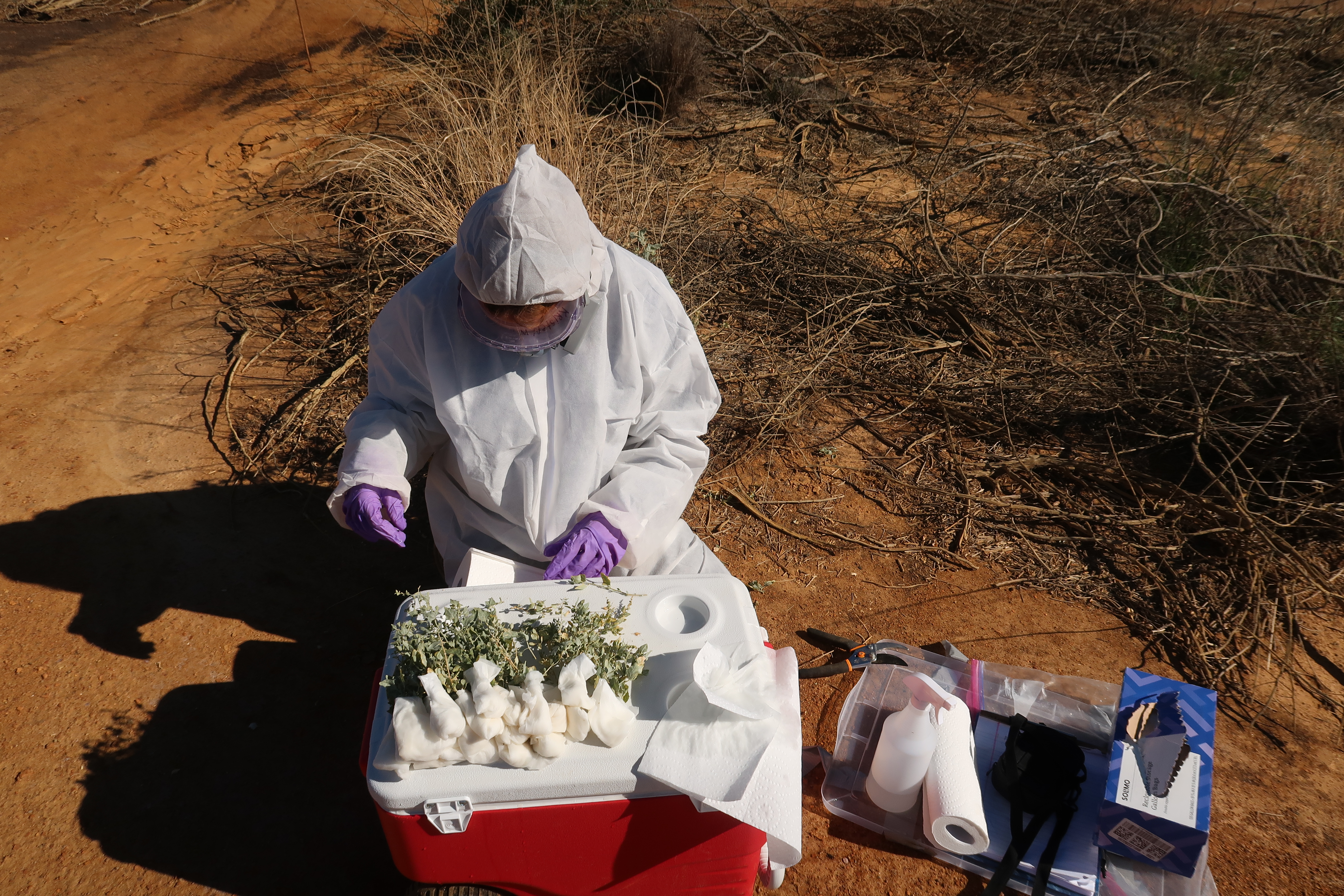
Importance of Capping Material Properties in Remediation of Mine Tailings
Mines stockpile topsoils sourced during mine site development are used as soil caps for revegetation efforts. This is known as the ‘Plant and Cap’ strategy; however, this technology does not guarantee successful plant establishment due to the variable soil quality of capping materials. Potential factors affecting soil quality include: i) origin of stockpile materials; ii) duration and depth of storage; and iii) changes in soil properties during storage. A better understanding of the associations between soil properties and plant establishment is needed for successful revegetation. Our experiments combine non-invasive characterization of root system development in rhizoboxes with analysis of microbial communities in root-influenced soil. Preliminary results indicated a strong influence of the quality and depth of capping materials on plant performance. Further analysis of the relationships between identified variables will help elucidate the effect of the capping material soil parameters (e.g., physical and chemical properties, storage depth and time) on successful revegetation in ‘Plant and Cap’ strategy. The project is sponsored by NIEHS Superfund Research Program (NIEHS SRP).
One person’s trash is another person’s treasure – optimizing metal-contaminated plant biomass towards the needs of Green Chemistry
In this project, an international interdisciplinary team is developing an innovative technology for recovery and reuse of metals (Cu, Mn, Zn) from legacy mine sites in Southeastern Arizona. The goal of the project is to identify native plant species that accumulate metals by employing portable x-ray fluorescence spectroscopy (XRF) and test them for their ability to i) hyperaccumulate target metals, ii) produce biomass, iii) proliferate roots. The subsequent plant biomass will be used in high-value, sustainable chemistry reactions to produce a new generation of eco-catalysts. We also hypothesize that the phytoremediation of the legacy mine is most likely to be successful with native, locally adapted plants, and this hypothesis is based on evidence from preliminary studies.

Identifying native metal-accumulating plants with a Portable X-Ray Fluorescence (pXRF) for phytoextraction
Phytoextraction is a promising strategy for remediation of metal-contaminated mine tailings and it capitalizes on the ability of plants to effectively harvest metals from soil through root uptake and transport into above-ground tissues. However, there is a paucity of information on plant metal accumulation in arid and semi-arid climatic regions, which presents a challenge for the selection of plant species for phytoextraction. To address this gap, this project focuses on conducting extensive in-situ surveys of legacy mine sites and natural outcrops in Arizona, using a portable X-ray fluorescence analyzer (pXRF). pXRF rapidly characterizes metal accumulation in plant tissues, spanning across various plant families. To date, using this technology, we have been able to identify numerous species with a significant capacity for uptake of Copper (Cu), Selenium (Se), Zinc (Zn) and Rhenium (Re).
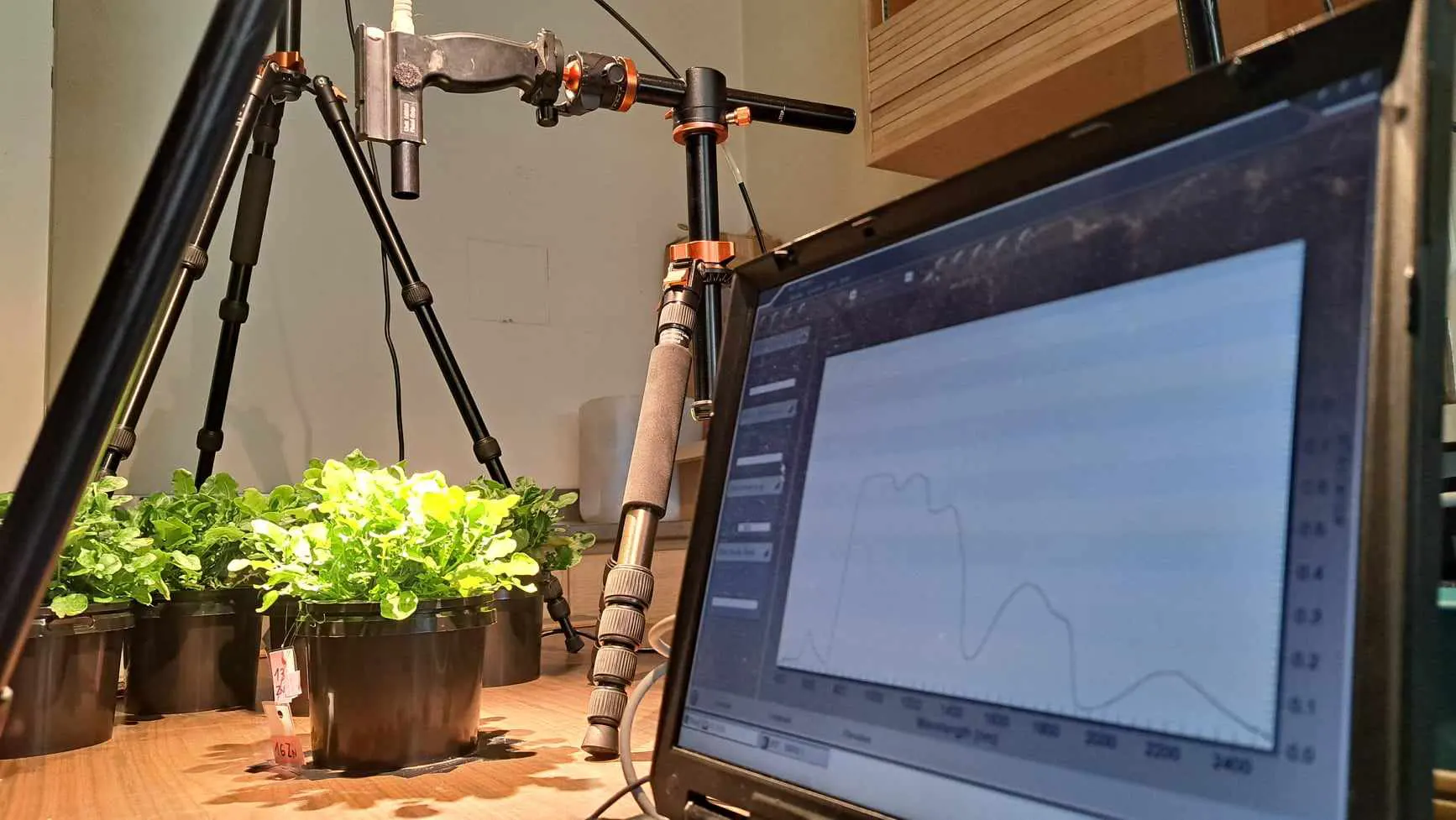
Sensing metals in plants and soil with hyperspectral imaging
Increasingly, the identification of metal-tolerant and metal-accumulating plant species is vital for phytomanagement and phytoremediation of legacy mine sites in arid and semi-arid regions. Innovative techniques are essential for the rapid and large-scale characterization of elemental contents in desert plants. In this study, we enhance the identification process using hyperspectral imaging in conjunction with Portable X-Ray Fluorescence spectroscopy (pXRF). This combination will allow for in situ detection and estimation of metal contents in plants. We validate this method through the use of handheld hyperspectral cameras, examining the spectral signatures of target metals in plants exposed to varied metal concentrations hydroponically. Once validated, hyperspectral cameras will be deployed on UAVs to conduct extensive investigation of metal uptake in plants across many legacy mine sites in Arizona.
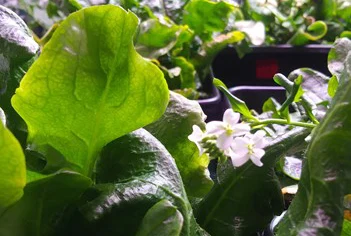
Role of soil microbiome in metal hyperaccumulation
This project is focused on understanding the role of soil microbiome in metal-uptake into above-ground foliage of Arabidopsis halleri. As there is intra-species variability in metal hyperaccumulation in A. halleri, transplant experiments were conducted. The diversity of soil microbial communities is being characterized in four populations of A. halleri with contrasting zinc and cadmium hyperaccumulation traits, two each from contaminated and uncontaminated sites. A better understanding of plant-soil-microbial interactions from this study will have applications in reducing the toxic effects of metals in soils by using metal tolerant plants.
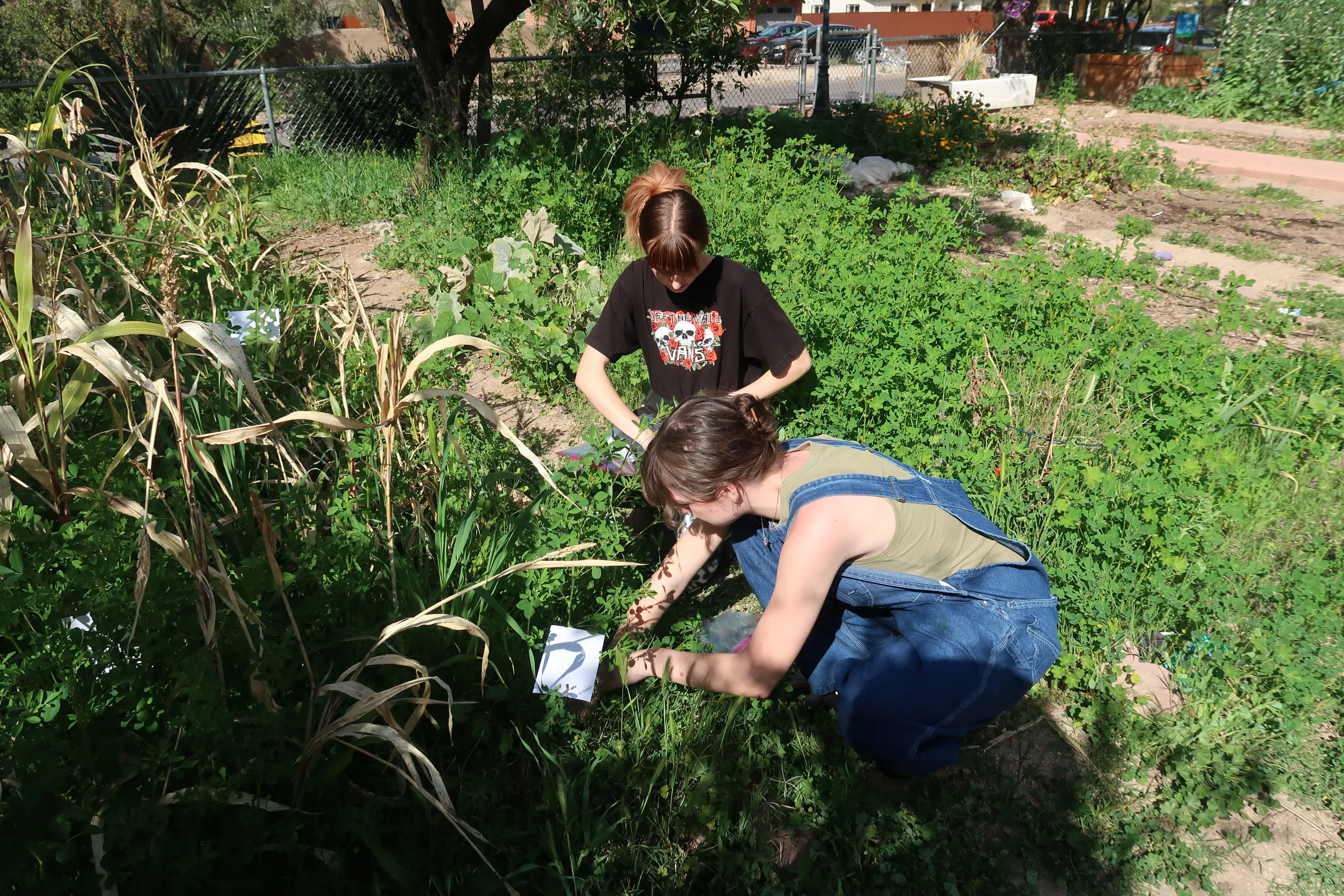
UA Database for Metal Contaminants in Produce
With funding from the University of Arizona Campus Sustainability Fund, a part of the Office of Sustainability, we have established an initiative to test and report on metal concentrations found in fresh produce. Currently, we are testing produce that is specifically grown and consumed within the University of Arizona community. Plants from the University of Arizona Community Garden and the Biosphere 2 Freight Farm Greenery S hydroponic facility will be harvested and tested with a methodology and rationale that we developed, centered on the use of a portable x-ray fluorescence device (pXRF). This information will be publicly available on our website upon completion of the project.
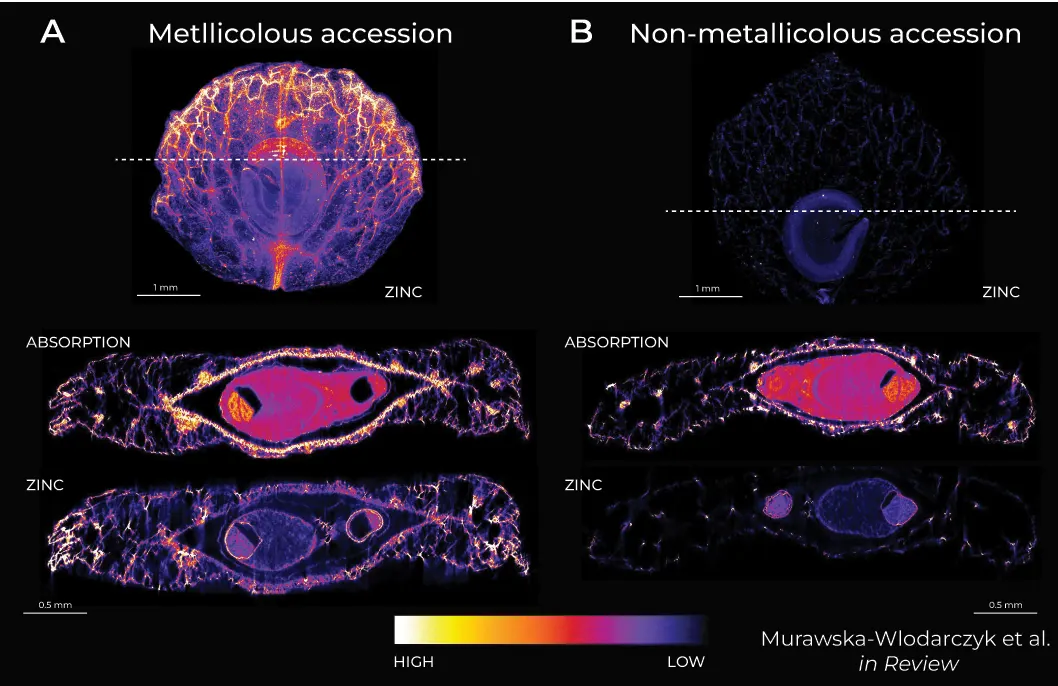
Unraveling the impact of contamination on plant reproductive strategies – Visualizing metal allocations in seeds of metal-tolerant Atriplex lentiformis
Phytoremediation of metal-contaminated post-mining sites faces challenges due to high soil toxicity, hindering plant establishment and growth. Metal-tolerant plants originating from metal-contaminated areas may hold the key to successful remediation. However, the impact of metal toxicity on maternal plants and seed quality remains understudied.
In this study we focused on metal tolerant Atriplex lentiformis, examining the effects of toxic metal(loid) concentration in soils on its reproductive strategies, including germination patterns, elemental uptake, and allocation within the seeds. We employed advanced imaging techniques like Synchrotron X-ray Fluorescence Microscopy (XFM; 2D scans and tomography) combined with ICP-MS for precise analysis. We observed significant differences in metal(loid) concentration and distribution within the seed structures of A. lentiformis from contrasting populations.
The results of this work has recently been published (see Publications)
Main investigator: Kamila Murawska-Wlodarczyk
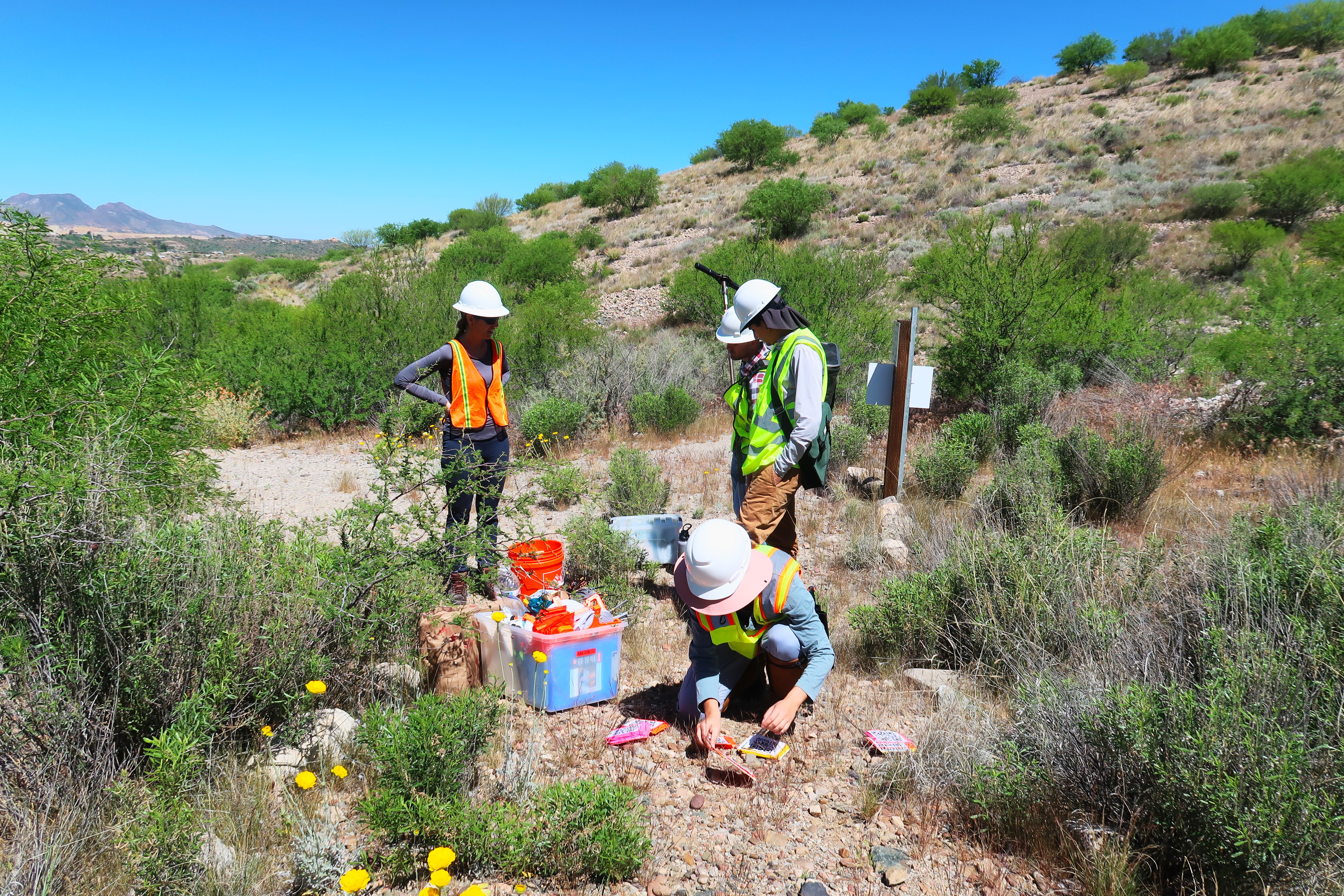
Survey of Plant Metal Accumulation And Tolerance
A plant survey was conducted on revegetated legacy copper mine tailings in Arizona to assess the variability of metal accumulation in different species. The study area comprised disturbed soil from copper mining activity that happened almost a century ago. So, we assumed the soil may contain elevated levels of toxic metal(loid)s that pose a hazard to plants and humans/animals. The plants capable of growing in such soil with stressful conditions are usually adapted to tolerate or accumulate toxic elements without showing any signs/symptoms of toxicity. Thus, we aimed to identify any unique plants that can accumulate any such elements above the toxic threshold. Plant shoot and soil samples were collected and brought to the lab for elemental analysis using PXRF analyzer.
.webp)
Metal Tolerance in the Genus Atriplex
Atriplex canescens and A. lentiformis are two congeneric species of perennial halophytic shrubs native to the contiguous US. They are known for heat and drought tolerance, which makes them a perfect candidate to propagate in desert landscapes with arid climates for revegetation purposes. Little is known about their heavy metal handling strategies in terms of tolerance and uptake in metal-polluted soils. However, few studies have reported that these species have accumulated over 1000 mg/kg of Zinc (Li et al., 2022, Kushwaha et al., 2023). Thus, we are conducting a phenotyping experiment to study the Zinc tolerance mechanism of these two species in controlled conditions using the hydroponic medium.
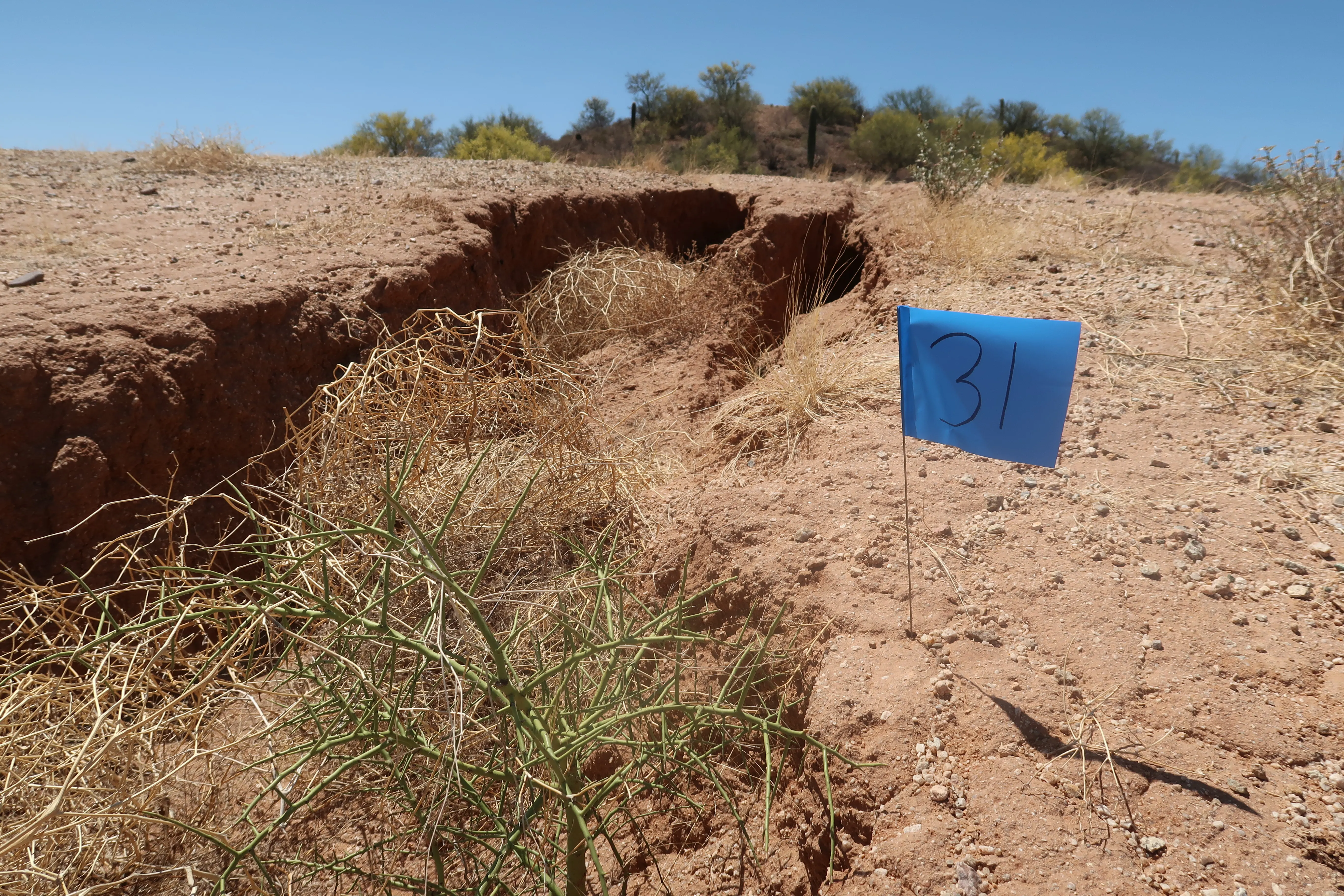
Reprocessing Copper Mine Tailings: Critical Minerals Recovery from Past, Current and Future Copper Mine Tailings
Mine tailings, especially those of historic or legacy mine sites, contain significant quantities of metals that are both crucial for modern manufacturing and harmful to the environment. Developing methods for extracting these elements from tailings presents a unique opportunity to reduce environmental hazards and make economically important metals available for use. This research initiative is a collaborative effort lead by researchers from the University of Arizona, Arizona State University, and Northern Arizona University, each contributing their expertise in Material Characterization, Remote Sensing, Extraction Testing, and Techno-Economic Analysis. For our part, we hope to contribute to this research through our projects involving remote sensing via hyperspectral imaging and extraction testing via hyperaccumulation.
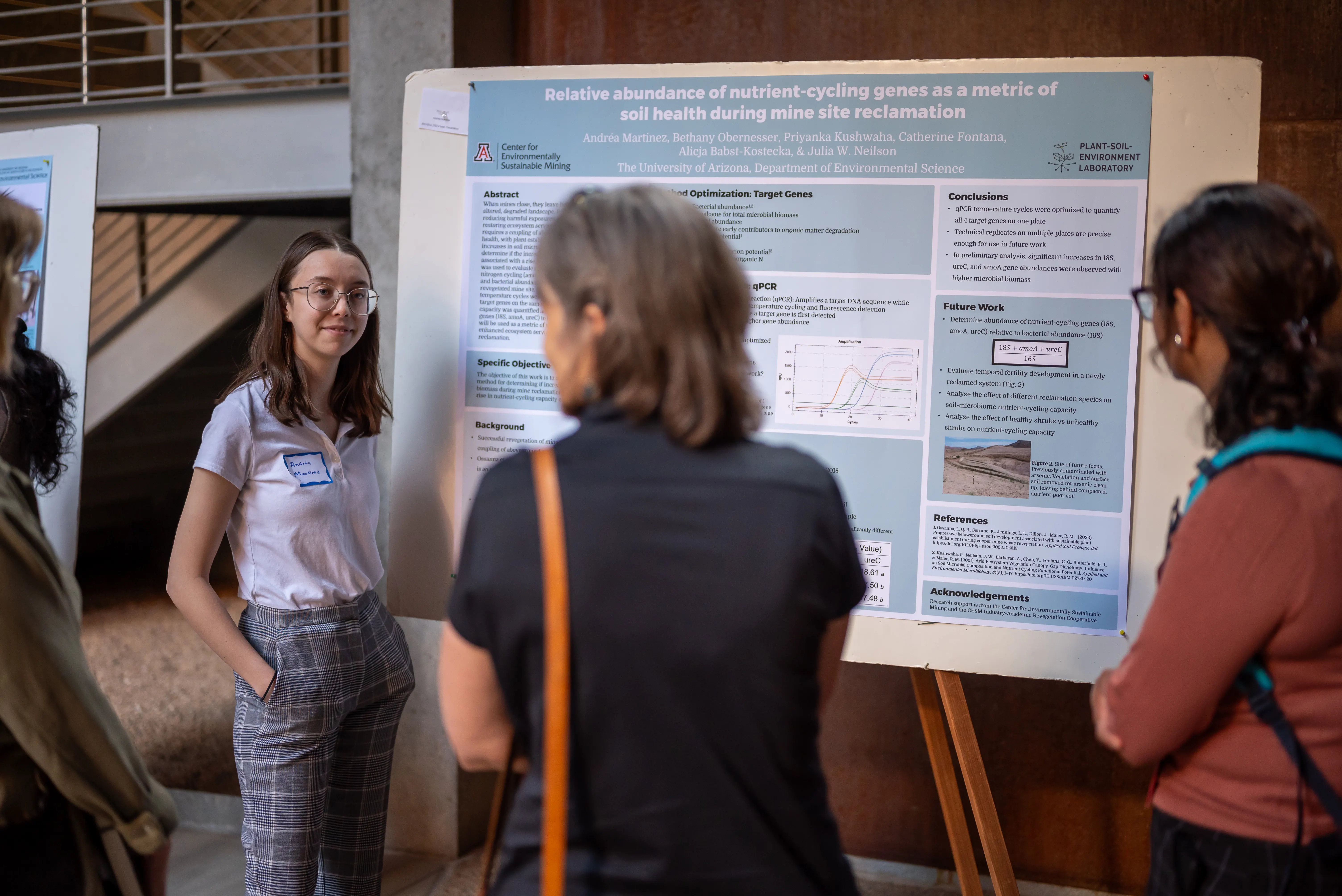
Relative abundance of nutrient-cycling genes as a metric of soil health during mine site reclamation
My project is focused on analyzing the nutrient-cycling capacity of the soil microbiome during mine site reclamation. We are quantifying nutrient-cycling capacity as a ratio of nutrient-cycling genes to total bacterial abundance. Current plans for using this metric are to analyze the effect of shrub health and shrub species on the nutrient-cycling capacity of the soil microbiome during reclamation.
Agrivoltaics
There is a critical need for sustainable agricultural practices in arid environments due to global warming and expanding desertification. Initiating and maintaining plant growth in arid regions is challenging because of limited soil moisture and excessive solar radiation. Agrivoltaics technology involves strategically situating agricultural activities beneath solar photovoltaic panels, fostering a symbiotic relationship between energy conversion processes. Evapotranspiration emanating from the soil and vegetation interacts with the solar panels above, effectively cooling them and enhancing their operational efficiency. Concurrently, the solar panels provide shade to the flora and soil, mitigating heat- and drought-stress on plants while bolstering soil’s capacity to retain moisture. This integrated infrastructure also facilitates the provision of ecosystem services such as habitat creation and carbon sequestration. Studies have demonstrated that agrivoltaic systems exhibit enhanced germination rates, reduced plant mortality, and increased vegetative yields, underscoring their multifaceted advantages.
Project 1: Assess performance of tepary beans (Phaseolus acutifolius) grown under solar panels compared to open-field conditions
Given the demonstrated efficacy of agrivoltaic systems in enhancing plant growth and the increasing demand for revegetation and remediation of metal-contaminated areas, there emerged a necessity to delve into the underlying mechanisms driving the success of agrivoltaic systems. This ongoing study aims to assess the performance of tepary beans (Phaseolus acutifolius) grown under photovoltaic (PV) solar panels compared to open-field conditions, examining plant development, yield, and plant-microbe interactions during one growing season. Preliminary results show that Tepary beans exhibit higher agricultural performance under solar panels, evidenced by multiple plant traits. Ongoing comparative analyses of the soil microbial diversity and abundance will elucidate potential synergistic relationships between soil health and plant productivity under agrivoltaic settings.
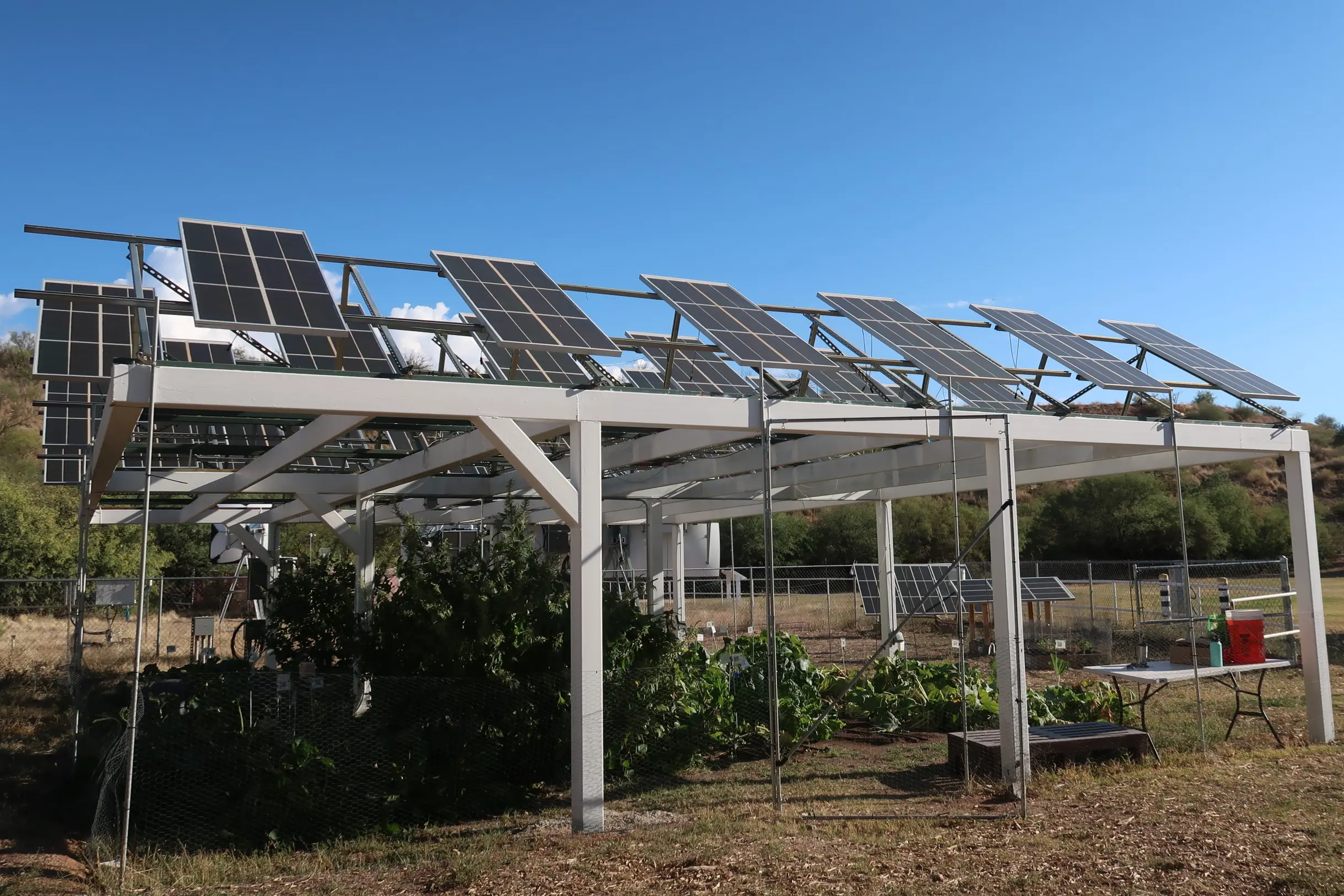
Project 2: Assessment of plant-microbial interactions for enhanced food crop production
The objective of this study was to characterize the plant-soil-microbial patterns and elucidate their impact on plant biomass and yield under PV solar panels. Four food crops - amaranth, cowpea, swiss chard, and kale - were cultivated under PV solar panels and controlled conditions at Biosphere 2 in Oracle, AZ.
Project 3: Advancing agrivoltaics by integrating soil health indices, microbiome dynamics, and plant-microbial interactions
Many solar sites struggle with establishing vegetation, necessitating costly soil amendments and reseeding efforts later. Therefore, there is an ongoing industry discussion of which soil metrics need to be evaluated at solar sites prior to vegetation establishment and to understand how the soil properties impact vegetation development. The Bifacial Agrivoltaics Research (BARN) site at the National Renewable Energy Laboratory (NREL), established in June 2022, faces similar challenges regarding vegetation establishment, particularly with dryland seed mixes. To address these challenges, this project aims to establish a collaboration between the Plant-Soil-Environmental lab at UArizona and NREL (funded by the UArizona RII Research Development Grants - UArizona National Labs Partnerships Grants). The overall goal of this project is to identify soil health indicators associated with successful and failed plant establishment within solar arrays.
Project 4: Assessment of alternative treatments for achieving successful arid-land mine reclamation
A major challenge facing the sustainability of future mining is to address the environmental and social consequences of mineral resource extraction, particularly in reclaiming and repurposing of mine waste. Revegetation failures are a significant issue, necessitating eco-friendly solutions, suitable for drylands. Thus, the objectives of this project are: (i) to evaluate the impact of soil amendments (compost and microalgae) on germination and development of native plant species, and (ii) whether the shade from PV panels will boost germination and/or enhance plant biomass (funded by the UArizona Mining & Mineral Resources Research and Innovation Initiatives). A pilot experiment will be set up at the UArizona Campus Agriculture Center (CAC) with a seed mixture containing 20 native plant species typically used in arid-land mine reclamation, including grasses, forbs, and shrubs. This experiment will lay the groundwork for implementing a novel multi-land use system on post-mining lands in arid regions, integrating the reclamation of mining sites with solar PV power generation.



